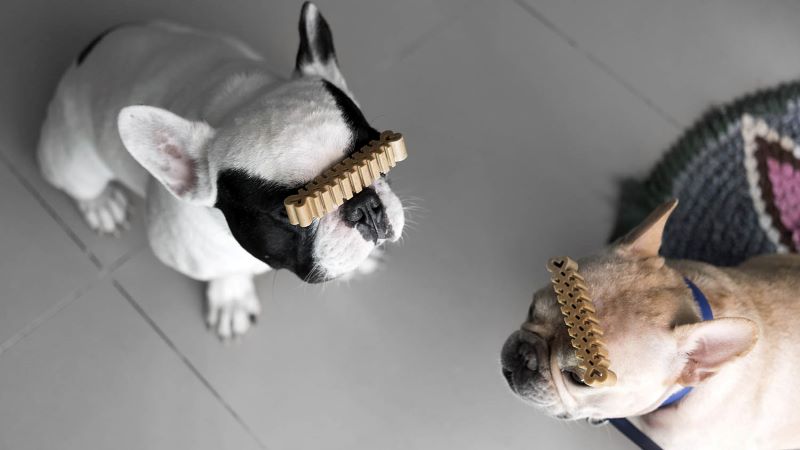National Dog Biscuit Day is February 23. In honor of the four-legged snackers in your life, let’s talk treats. Is it ok to use treats when training? How often should you give your dog treats? What kind are best for him? These are common questions you may have when it comes to giving your dog “snacks.” We’re going to set out to answer those questions for you. But remember, it is always best to listen to the advice of your veterinarian. Every dog is different and you and your vet know your dog’s health needs best.
Is it okay to use treats when training?
There are several times throughout the day when you may want to give your dog a treat. During a training session is one of these times. Go ahead! As Lisa Radosta, DVM says, “If you want to train your dog effectively, you have to find his ‘currency.’” For some dogs, it is food that’s their driving force. Just be careful not to give too many treats during a session. Jennifer Coates, DVM recommends your dog get 90% of his daily nutrition from balanced dog food and 10% from treats. Rewarding with small, low-calorie treats can help you achieve this food to treat ratio without feeling like you’re depriving your dog. See our blog, 5 Dog Training Tips, for more on using treats for training.
How often should you give your dog treats?
Be careful to monitor the timing of your treat giving. You don’t want to fill your dog’s belly with treats and then have him unable to finish his dinner. It can also be helpful to schedule treat times so your pet will learn what to expect, and not beg for more. My parents’ Golden knows she will get a treat at nighttime when her humans are watching tv in the playroom, so she runs up there and sits nicely, waiting for her treat. That is the only time, other than training, that she gets a treat, so it is special.
What kind of dog treats are best?
This will vary from dog to dog, depending on your pooch’s age, weight, and activity level. Prepackaged treats have a long shelf life and some are “dual action,” promising to clean your pet’s teeth and give him fresh breath. Just remember that treats should never replace daily brushing. Look for treats containing ingredients carefully chosen by experts in dog nutrition. You may also choose to reward your dog with natural treats. Veggies, such as carrots and green beans (without butter or salt), make good treats for dogs. But make sure to avoid onions, garlic, grapes, and raisins as these foods are toxic to dogs. Another option for healthy treats is the homemade kind. For a yummy recipe, check out our blog, National Dog Biscuit Day for a quick video how-to for pumpkin peanut butter dog biscuits.
Monitor your treating habits
Whatever you do, remember that you ultimately control your dog’s weight, and giving too many treats can keep him from maintaining his ideal weight. Check with your pet’s doctor to find out how many calories he needs per day, then develop a plan for treat giving and stick to it. Your vet can let you know if your dog is a healthy weight at your annual wellness exam. A healthy dog is a happy dog!

